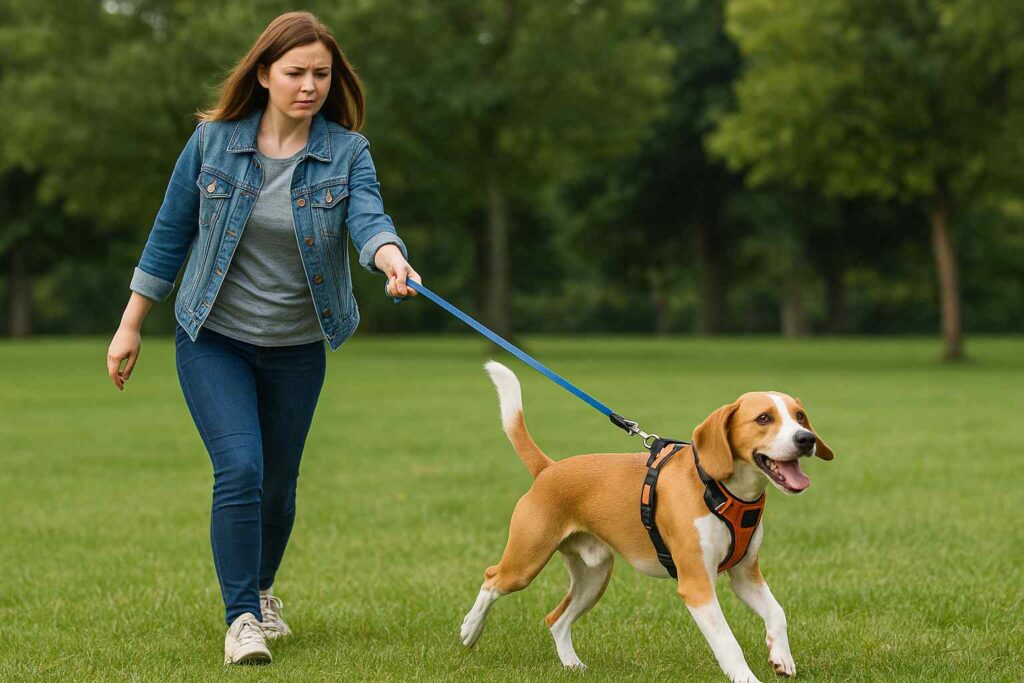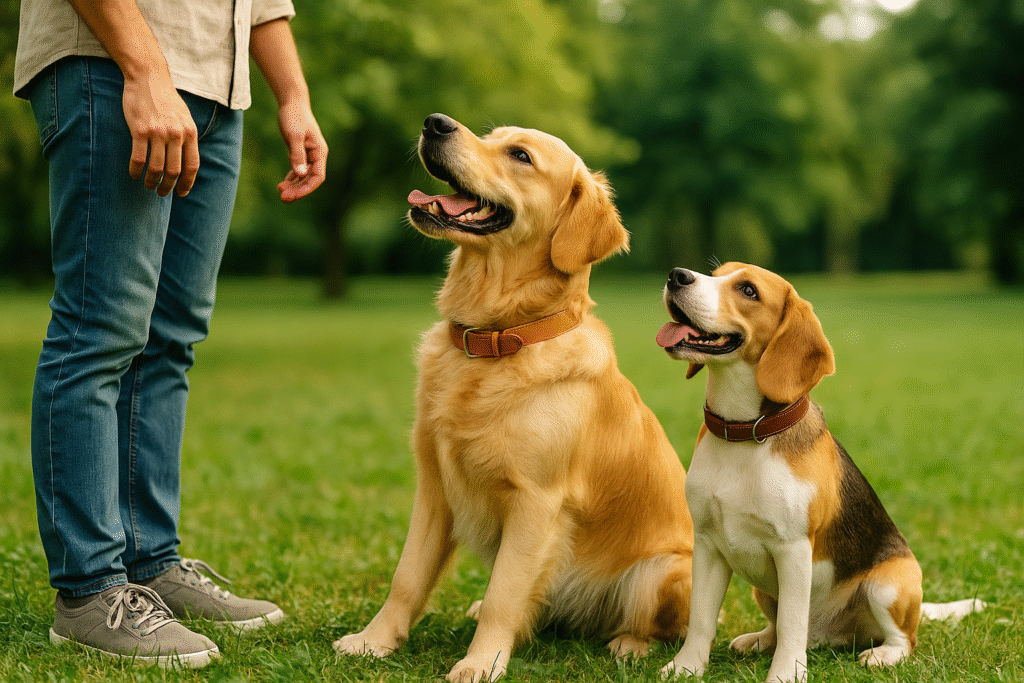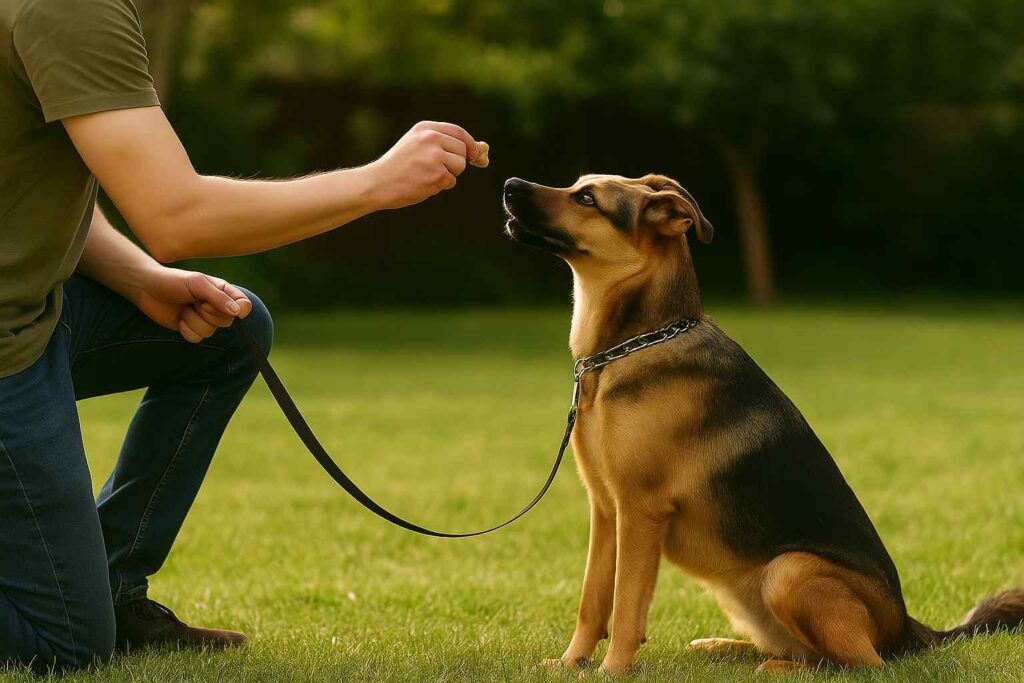If your daily walks feel more like a tug-of-war than a peaceful stroll, you’re not alone. Many dog owners struggle with leash pulling, and it can turn what should be a bonding experience into a stressful one. Whether your dog is just overly excited or a powerful puller, the good news is: there are collars (and training tips!) that can help. In this guide, we’ll walk you through the best collar options for dogs that pull, plus share advice that feels more like a friend helping a friend than a strict training manual.
Why Dogs Pull on the Leash
Pulling is a common behavior, especially for dogs who are excited to explore the world. They don’t naturally understand leash manners—it’s something we have to teach them. Some dogs pull because they’re full of energy, while others might be anxious or overstimulated. And let’s be honest: sometimes they just really want to say hi to that squirrel.
Pulling isn’t a sign of a bad dog. It’s a communication gap. And that gap can be bridged with the right combination of tools and training.
Why the Right Collar Makes a Big Difference
Not all collars are created equal. While some are great for everyday use, they might not help much with pulling. The right collar can help you manage your dog’s behavior more easily, reduce strain on both of you, and set the stage for positive walking habits.
If you’re not sure what type of collar is best overall, check out our full guide: What’s the Best Dog Collar for Your Pup? A Complete Guide for Pet Owners
Best Types of Collars for Dogs That Pull
Here are some top-performing options to consider based on your dog’s needs:
1. Front-Clip Harnesses
While technically not a collar, front-clip harnesses are a top pick for dogs that pull. The clip in the front helps redirect your dog’s momentum back toward you, instead of letting them charge forward.
Pros:
- Great control for big or strong dogs
- Reduces neck pressure
- Encourages loose-leash walking
Best For: Large breeds, high-energy dogs, beginners in leash training
2. Martingale Collars
These collars gently tighten when your dog pulls, preventing them from slipping out. They provide more control without choking.
Pros:
- No sharp pressure points
- More secure for narrow-headed breeds
- Offers gentle correction
Best For: Greyhounds, Whippets, or any dog who can slip out of flat collars
3. Head Collars (e.g., Gentle Leader)
These fit around your dog’s muzzle and neck, giving you control of their head movement—which naturally redirects the rest of the body.
Pros:
- Offers maximum control
- Effective for strong, persistent pullers
- Lightweight and safe when used properly
Caution: May take time for your dog to get used to it. Start slow, with treats and positive reinforcement.
Best For: Large breeds, reactive dogs, confident walkers
4. Prong Collars (Use With Caution)
Prong or pinch collars can work when used correctly and under guidance from a professional trainer. These collars apply pressure around the dog’s neck when they pull.
Pros:
- Can reduce pulling quickly in strong dogs
Cons:
- Can cause injury or fear if misused
- Not a long-term solution
Best For: Experienced handlers or those working with a certified trainer. Considering a prong collar? Read this full guide before deciding.
5. Flat Collars (Basic Everyday Collars)
While not ideal for stopping pulling, these collars are good for ID tags and short, relaxed walks. They offer no control over pulling.
Best For: Dogs who are already leash-trained or non-pullers
Training Tips That Work with Any Collar
No collar can completely fix pulling on its own. It’s a tool to assist your training. Here are some gentle tips to make your walks better:
- Reward for slack leash: Give treats or praise when your dog walks beside you without pulling.
- Stop and reset: If your dog pulls, stop walking. Wait until the leash slackens, then move again.
- Change direction: Calmly turn and walk the other way to break the pulling momentum.
- Be consistent: Repetition helps your dog learn what’s expected.
Think of it like dancing with your dog—you’re building rhythm and communication.
Safety Tips for Any Collar Type
- Use the two-finger fit rule: You should be able to slip two fingers between the collar and your dog’s neck.
- Check for signs of rubbing or chafing, especially with harnesses or head collars.
- Inspect hardware regularly for wear or rust.
- Avoid leaving collars on unsupervised dogs, especially in crates.
Final Thoughts: You’ve Got This
If you’re struggling with leash pulling, know that you’re not alone. It takes time and patience, but the right collar can make a world of difference. Combine it with consistent, kind training, and those frustrating walks can become the best part of your day.
Remember: your dog wants to please you—they just need the tools and guidance to understand how.
Want more real-life pet advice, gear guides, and honest tips from fellow dog lovers? Stick around the blog, or share your go-to walking trick in the comments below. Let’s make walk time the highlight of your day—not the hardest part!




